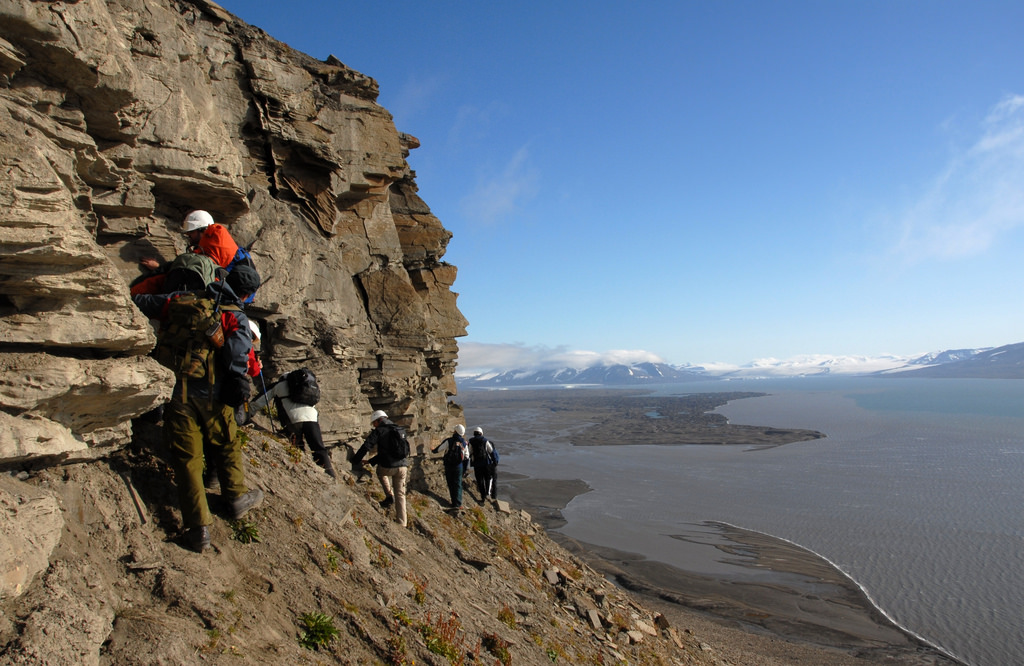1.3 What Do Geologists Do?
Geologists do a lot of different things. Many of the jobs are the things you would expect. Geologists work in the resource industry, including mineral exploration and mining, and exploring for and extracting sources of energy. They do hazard assessment and mitigation (e.g., assessment of risks from slope failures, earthquakes, and volcanic eruptions). They study the nature of the subsurface for construction projects such as highways, tunnels, and bridges. They use information about the subsurface for water supply planning, development, and management; and to decide how best to contain contaminants from waste.
Geologists also do the research that makes practical applications of geology possible. Some geologists spend their summers trekking through the wilderness to make maps of the rocks in a particular location, and collect clues about the geological processes that occurred there. Some geologists work in laboratories analyzing the chemical and physical properties of rocks to understand how the rocks will behave when forces act on them, or when water flows through them. Some geologists specialize in inventing ways to use complex instruments to make these measurements. Geologists study fossils to understand ancient animals and environments, and go to extreme environments to understand how life might have originated on Earth. Some geologists help NASA understand the data they receive from objects in space.
Geological work can be done indoors in offices and labs, but some people are attracted to geology because they like to be outdoors. Many geological opportunities involve fieldwork in places that are as amazing to see as they are interesting to study. Sometimes these are locations where few people have ever set foot, and where few ever will again.


